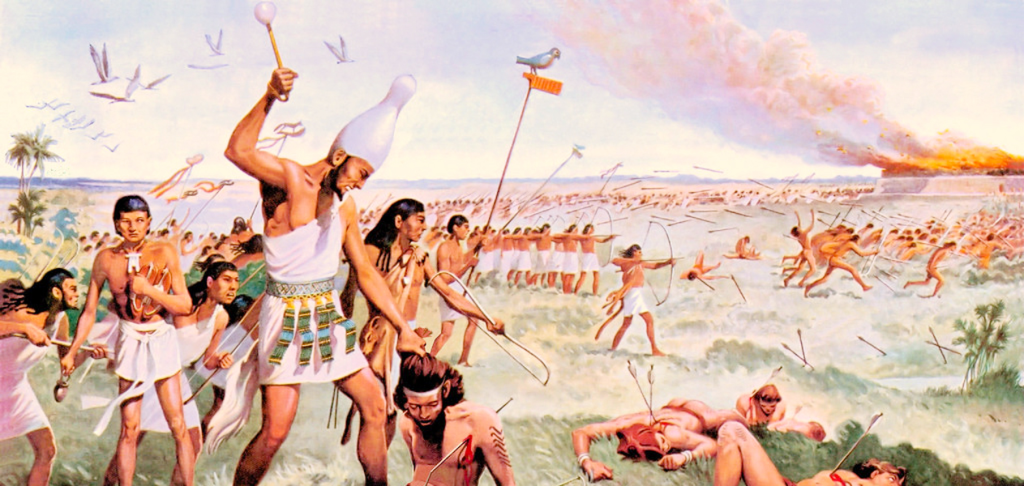
The ancient land of Egypt, with its rich tapestry of history and civilization, was not always a united nation. It was a realm of distinct regions, each with its own rulers and cultures. However, a pivotal moment in antiquity forever changed the course of Egyptian history—the Unification Battle. Join us as we journey back in time to witness the epic clash of kingdoms, the triumph of King Narmer, and the birth of a united Egypt under the rule of a single pharaoh.
1. Fragmented Lands
In the centuries preceding the Unification Battle, Egypt was a land divided. The fertile Nile Delta in the north, known as Lower Egypt, was governed by its own rulers, while the southern region, Upper Egypt, held its own independent dynasties. These distinct cultures and power centers created a dynamic but fragmented landscape.
2. The King Narmer Palette
The Unification Battle is immortalized in the Narmer Palette, a ceremonial stone slab carved around 3100 BCE. This artifact depicts a triumphant King Narmer, also known as Menes, wearing the crowns of both Upper and Lower Egypt, a symbol of his dual rule after the battle. The palette showcases Narmer’s military prowess and his role as the unifier of the two lands.
3. Strategic Objectives
Narmer’s motivations for unification are believed to be multifaceted. The need for a united front against external threats, the desire to control trade routes and resources, and the aspiration to establish himself as a divine ruler all played a role in his decision to wage the Unification Battle.
4. The Battle and Its Implications
The details of the Unification Battle are shrouded in mystery, but its significance reverberates through history. Narmer’s victory marked the end of the predynastic period and the establishment of the first dynasty of pharaohs. With the unification of Upper and Lower Egypt, a new era began—one characterized by centralized rule, divine kingship, and the construction of the civilization that would awe the world.
5. Legacy and Consequences
The Unification Battle set the stage for a unified Egypt under the rule of a pharaoh—a tradition that would endure for thousands of years. The concept of a divine ruler governing both the spiritual and temporal aspects of life became deeply ingrained in Egyptian culture. The Narmer Palette and its imagery also underscored the pharaoh’s authority and his role as a bridge between the human and divine realms.
6. Reflections and Contemporary Resonance
The Unification Battle reminds us that history is not a static concept; it is shaped by the actions and decisions of individuals who leave an indelible mark on the course of events. Narmer’s legacy serves as a testament to the power of vision, leadership, and determination in shaping the destiny of a nation.

